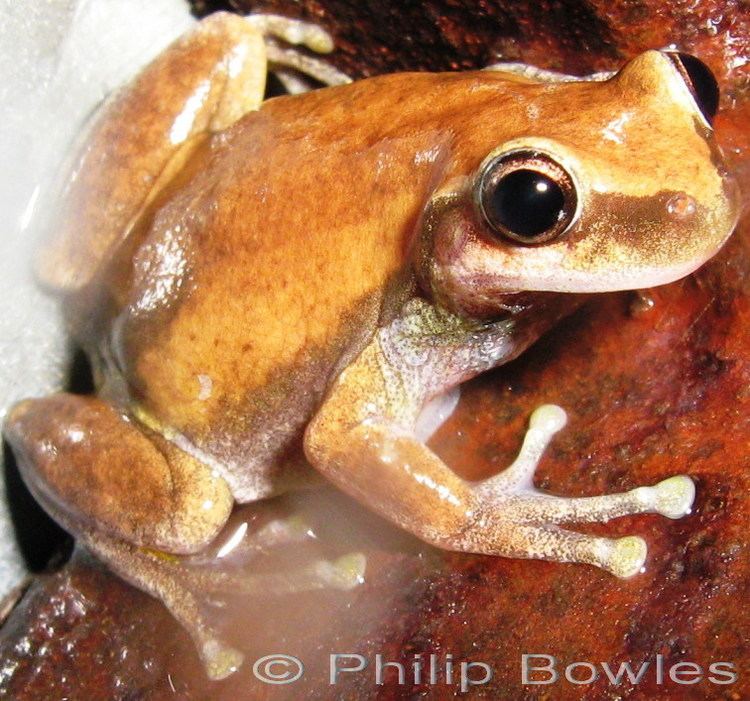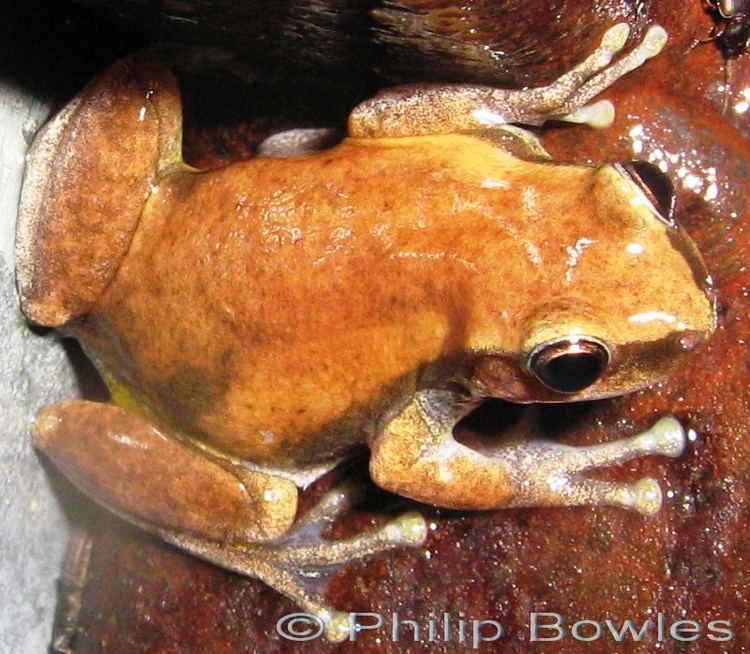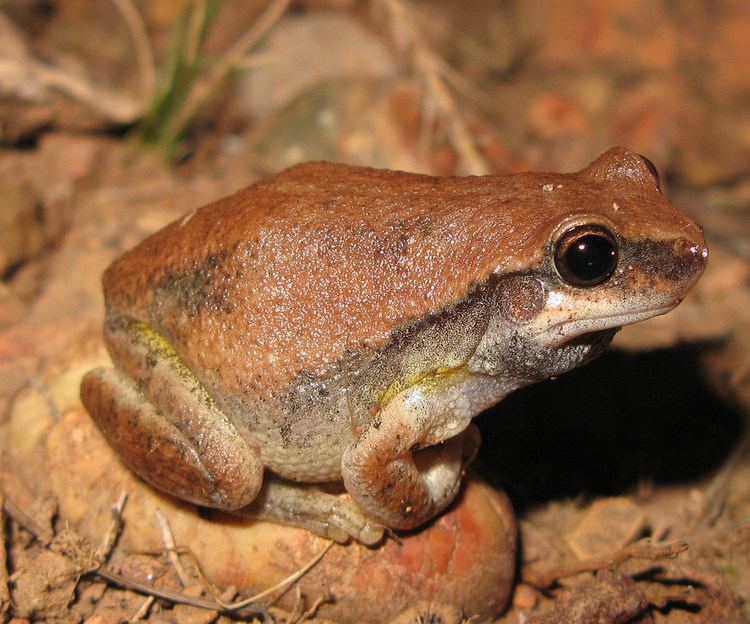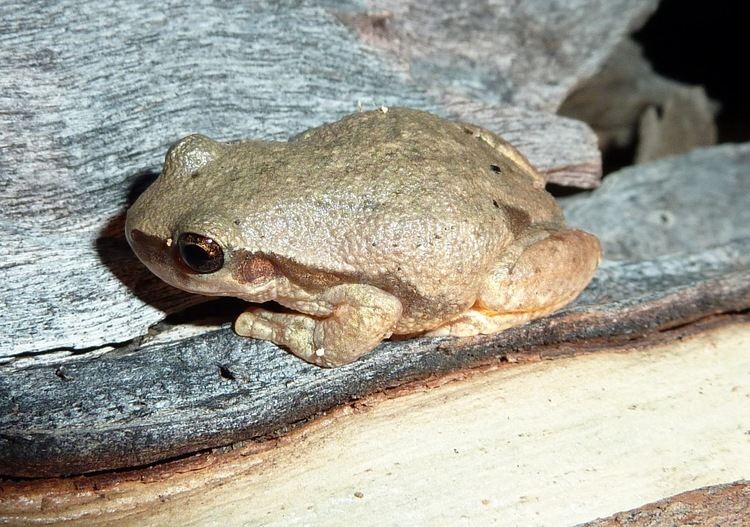Order Anura Higher classification Australasian treefrogs | Phylum Chordata Scientific name Litoria rubella Rank Species | |
 | ||
Similar Frog, Australasian treefrogs, Roth's tree frog, Northern dwarf tree frog, Amphibians | ||
Litoria rubella calling desert tree frog
The desert tree frog or little red tree frog (Litoria rubella) is a tree frog native to Australia, southern New Guinea, and Timor (East Timor and Indonesia). It is one of Australia's most widely distributed frogs, inhabiting northern Australia, including desert regions and much of temperate eastern Australia. It is one of the few Australian tree frogs to inhabit arid, tropical, and temperate climates.
Contents

Description

It is rotund, with a small, flat head. It has short arms and strong, short legs. Adults are 28–43 mm in snout-vent length. Its ventral surface is white, and the dorsal surface ranges from light grey to dark red and has small black flecks. Adult specimens from Cooktown, Queensland, often show a pronounced metallic sheen on the dorsal surface, ranging in colour from bronze to gold. A dark band runs from the snout, across the eye, and along the flanks of the frog. The throats of males in breeding season are a dark grey colour. The groin is lemon-yellow, and the tympanum is visible. Baby frogs have an almost transparent abdomen, allowing a clear view of their abdominal organs.
Ecology and behaviour
The wide distribution and large range of habitats it inhabits creates large variation in breeding habits. Populations which live in temperate or tropical zones breed annually during the wet season or summer. However, the populations in desert regions will breed whenever rain occurs. Tadpole development is dependent on the temperature of the water. Small amounts of water heat to higher temperatures, which triggers the tadpoles to develop faster; some develop in just 14 days.

Unlike most desert frogs, it does not burrow to avoid heat and desiccation. It will seek out shelter under rocks, trees, or leaf litter. They are commonly found around human dwellings, where water is available, and can be found in sinks or drain pipes.

